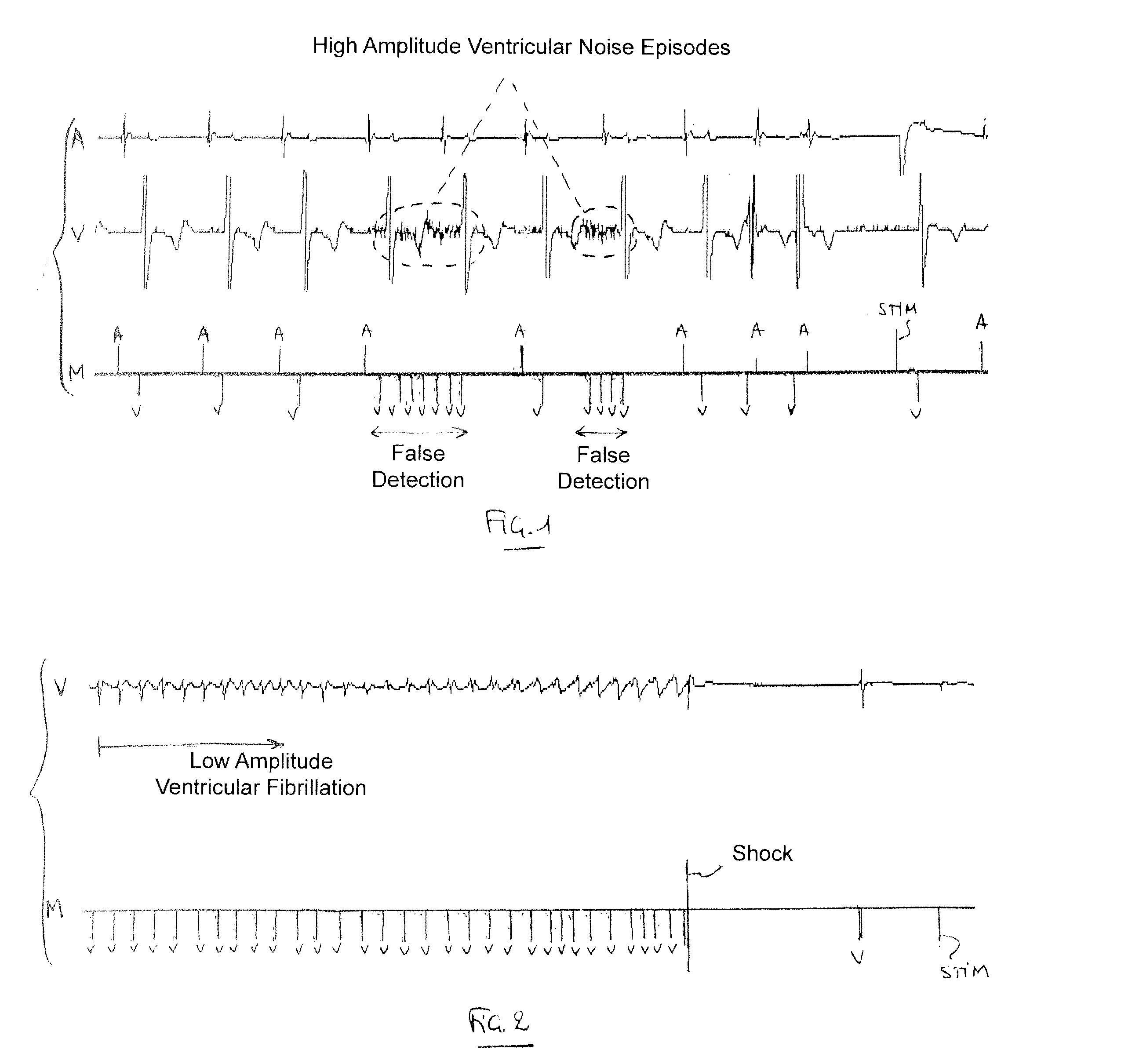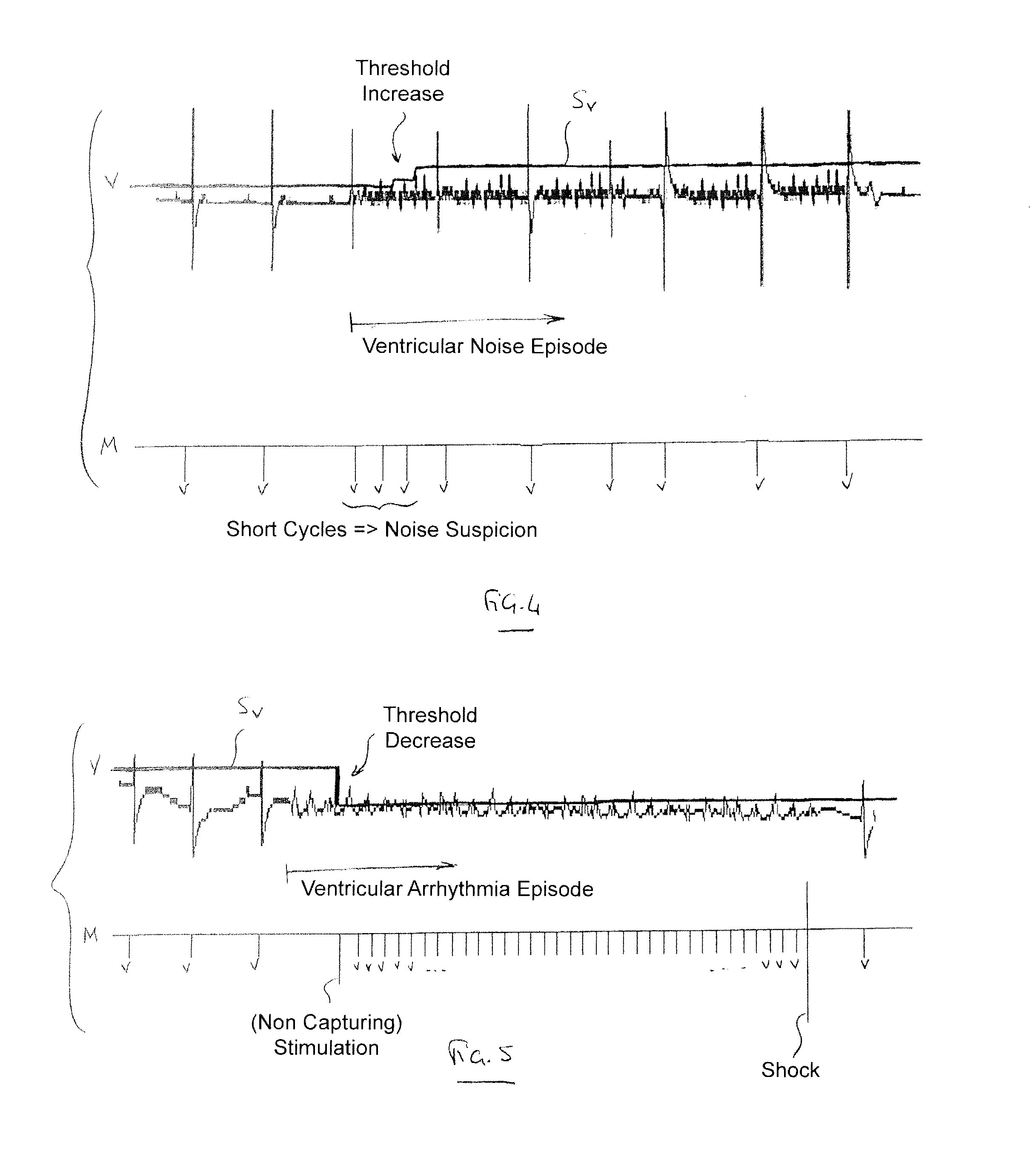Implantable defibrillator/cardioverter medical device with a dynamically adjustable threshold for ventricular detection
a technology of implantable defibrillators and ventricular detection, which is applied in the field of active implantable medical devices, can solve the problems of affecting the decision to deliver or not to deliver a therapy, generating artifacts, and detection of the therapy by the implanted device may have very serious consequences, so as to increase maintain the adjustable detection threshold, and reduce the adjustable detection threshold
- Summary
- Abstract
- Description
- Claims
- Application Information
AI Technical Summary
Benefits of technology
Problems solved by technology
Method used
Image
Examples
Embodiment Construction
[0024]With general reference to the drawings, devices and methods for detecting ventricular arrhythmias are provided that are illustrated by embodiments described below. In keeping with the invention, various embodiments can be configured to reduce the detection of ventricular noise while maintaining good detection of ventricular arrhythmias.
[0025]More specifically, the devices and methods of the invention detect occurrence of ventricular events based on data, relating to electrical activity of the heart, collected using an implantable device. The detection of the events can be performed using a sensitivity function that is based on an adjustable detection threshold. A low ventricular sensitivity (e.g., a relatively high detection threshold) may be initially utilized in an instance of suspected noise. A noise test may be used to determine whether noise is suspected to be present in the collected data. If noise is suspected to be present in the data, then the sensitivity can be reduc...
PUM
 Login to View More
Login to View More Abstract
Description
Claims
Application Information
 Login to View More
Login to View More - R&D
- Intellectual Property
- Life Sciences
- Materials
- Tech Scout
- Unparalleled Data Quality
- Higher Quality Content
- 60% Fewer Hallucinations
Browse by: Latest US Patents, China's latest patents, Technical Efficacy Thesaurus, Application Domain, Technology Topic, Popular Technical Reports.
© 2025 PatSnap. All rights reserved.Legal|Privacy policy|Modern Slavery Act Transparency Statement|Sitemap|About US| Contact US: help@patsnap.com



